Archive for May, 2011
Head in a cloud
27 May 2011 | Articles, Non-fiction
Thinking, reading, writing, buying… Teemu Manninen explores the new freedoms, literal and poetic, offered by cloud computing, where what you can do is no longer limited by what you happen to have on your computer

High in the sky: cumulus clouds. Photo: Michael Jastremski, Wikimedia
I’m sitting in a rocking chair on the porch of a cottage by a lake. My fingers tap and slide on the surface of a black glass panel, a kind of instrument used in the composing of literature. Each tap equals a letter, a series of taps equals a word, a symphony of taps becomes a paragraph, a paragraph an essay.
The glass panel remembers these letters and words and the writings they become, and knows them by their names, but it could also record anything I see or hear. I could even talk to it and it would understand my commands, as if some nether spirit were captured inside, a magic genie slaved to do my bidding. More…
Tove Jansson meets Lewis Carroll
27 May 2011 | In the news
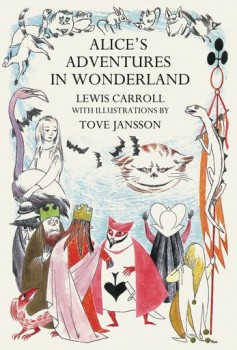 The British art museum Tate has recently reprinted two of Lewis Carroll’s books with illustrations by Tove Jansson, artist, writer and creator of the Moomins.
The British art museum Tate has recently reprinted two of Lewis Carroll’s books with illustrations by Tove Jansson, artist, writer and creator of the Moomins.
Tove Jansson (1914–2001) had begun to write and illustrate her Moomin stories for children in the late 1940s. In 1959 she was commissioned to illustrate the Swedish-language translation of Lewis Carroll’s The Hunting of the Snark (1874), about an ‘inconceivable creature’, the Snark, for the Finland-Swedish publisher Schildts.
After illustrating The Hobbit by J.R.R. Tolkien in 1962, Jansson then took on Carroll’s best-known book, Alice‘s Adventures in Wonderland, which was published in 1966 (see the pictures here).
The English-language original of Alice with her illustrations was then published in 1977 by Delacorte Press. Tate has now made Tove Jansson’s witty, perceptive visions of Alice available again, while the Snark with her original illustrations has now been printed in English for the first time.
Poetry written aloud
20 May 2011 | Reviews
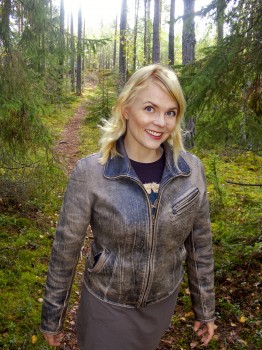
Heli Laaksonen. Photo: Otava/Irmeli Jung
In the 21st century, poetry written in various dialects has drawn new audiences to poetry readings. A common feature of, for example, Sinikka Nopola’s short prose about the family, written in the dialect of the Tampere area, and Heli Laaksonen’s poetry, which is written in the dialect of south-west Finland, is the enormous popularity of live performances by the authors. Their audiences love to hear them read in dialect, because the texts are funny, and they sound even funnier when read aloud.
Heli Laaksonen (born 1972) has, ever since her first collection, Pulu uis (‘Pigeon swimming’, 2000), been Finland’s best-selling poet. Her three collections and audio books have achieved sales figures that are astonishing in the Finnish context – tens of thousands of copies. Her fourth collection, Peippo vei (‘The chaffinch took it’, Otava, 2011), has been at the head of bookseller’s sales lists throughout March and April. More…
A soul on the train
In one of Heli Laaksonen’s poems the narrator buys a ticket for her soul and herself in a train’s pet carriage. Her capricious poetry features new potatoes, woodpeckers, weasels, and even a pig in fox’s clothing. Introduction by Mervi Kantokorpi
Poems from Peippo vei (‘The chaffinch took it’, Otava, 2011)
First early
From the potato patch there rose a human seedling, too.
Winston, I called it
as it was Winstons I’d sowed in this row
Whole,
beautiful,
unmarked by hoe or blight.
I put it in the basket with the others.
It sat there in the quiet pile, at the edge,
looked on while I slogged away,
gnawing a little bit out of the side of a potato.
What was it thinking?
What could it be that earlies think about?
The first summer sparrows are fresh out of the oven.
I so wish they’d only think about nice things.
I try to look happy
to give them a good start. More…
Writers’ talk
13 May 2011 | In the news
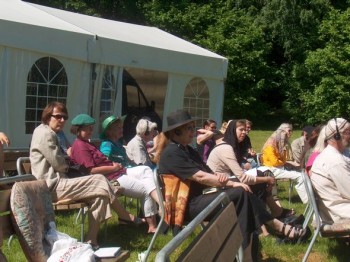
Under the midday sun: participants of the Writers' Reunion in 2005
Next month sees a new International Writers’ Reunion at Messilä Manor in the city of Lahti in central Finland. The first such meeting was organised in 1963.
Since then, more than a thousand writers, translators, journalists, critics and other book people, Finnish and foreign, have met for a few days every other year just before Midsummer to discuss various topics.
And the nights are light, and long, and the talking goes on.
This time the theme is ‘The writer beyond words’: how will the writer meet the limits of language and narration? (More on the topic in our article Beyond words.) The meeting takes place between 19 and 21 June.
So far about twenty writers, from Canada, Czech Republic, Denmark, Estonia, France, Germany, Great Britain, Ireland, Lithuania, Norway, Russia, Slovenia, Sweden and Udmurtia, are expected to arrive, as are some 20 Finnish participants. All debates and poetry evenings are open to the general public free of charge.
Kari Kuula: Paholaisen biografia [The biography of the Devil]
13 May 2011 | Mini reviews, Reviews
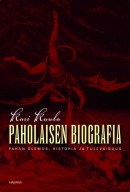 Paholaisen biografia. Pahan olemus, historia ja tulevaisuus
Paholaisen biografia. Pahan olemus, historia ja tulevaisuus
[The biography of the Devil. The essence of evil, history and future]
Helsinki, Kirjapaja, 2010. 381 p.
ISBN 978-951-607-837-6
€ 38, hardback
This book is a chronological study of the Devil, seen through the history of ideas and cultural history. As the Devil is mainly a concept in Christian theology, the most profound studies of his essence have been carried out by experts of this field. The book also studies the Devil’s ‘disciples’, demons, and beliefs related to them. The main theme of the work consists of the history of diabology and demonology, from the Old Testament to contemporary theology. Another central theme is the theological dilemma of why God allows evil and suffering. In the cultural history section the author concentrates on the practical implications of belief in the Devil in different ages as well as parallel phenomena such as possession and belief in witchcraft. Folk tales about the Devil and descriptions of his putative looks as well as some classic works of fiction featuring the Devil are discussed. Kari Kuula is doctor of theology and priest who has published several non-fiction books on the Bible and Christianity.
Best Translated Book Award 2011
13 May 2011 | In the news
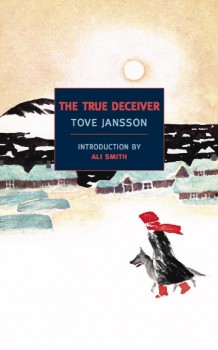 Thomas Teal’s translation from Swedish into English of Tove Jansson’s novel Den ärliga bedragaren (Schildts, 1982), entitled The True Deceiver (published by New York Review Books, 2009), won the 2011 Best Translated Book Award in fiction (worth $5,000; supported by Amazon.com). The winning titles and translators for this year’s awards were announced on 29 April in New York City as part of the PEN World Voices Festival.
Thomas Teal’s translation from Swedish into English of Tove Jansson’s novel Den ärliga bedragaren (Schildts, 1982), entitled The True Deceiver (published by New York Review Books, 2009), won the 2011 Best Translated Book Award in fiction (worth $5,000; supported by Amazon.com). The winning titles and translators for this year’s awards were announced on 29 April in New York City as part of the PEN World Voices Festival.
Organised by Three percent (the link features a YouTube recording from the award ceremony, introducing the translator, Thomas Teal [fast-forward to 7.30 minutes]) at the University of Rochester, and judged by a board of literary professionals, the Best Translated Book Award is ‘the only prize of its kind to honour the best original works of international literature and poetry published in the US over the previous year’. ‘Subtle, engaging and disquieting, The True Deceiver is a masterful study in opposition and confrontation’, said the jury.
Tove Jansson (1914–2001), mother of the Moomintrolls, story-teller and illustrator of children’s books, translated into 40 languages, began to write novels and short stories for adults in her later years. Psychologically sharp studies of relationships, they are written with cool understatement and perception.
Quality writing will work its way into a wider knowledge (i.e. a bigger language and readership) eventually… even though occasionally it may seem difficult to know where exactly it comes from; in a review published in the London Guardian newspaper, the eminent writer Ursula K. Le Guin assumed Tove Jansson was Swedish.
Ulla Jokisalo & Anna Kortelainen
Pins and needles
11 May 2011 | Essays, Non-fiction
In these pictures by Ulla Jokisalo and texts by Anna Kortelainen, truths and mysteries concerning play are entwined with pictures painted with threads and needles. Jokisalo’s exhibition, ‘Leikin varjo / Guises of play’, runs at the Museum of Photography, Helsinki, from 17 August to 25 September.
Words and images from the book Leikin varjo / Guises of play (Aboa Vetus & Ars Nova and Musta Taide, 2011)
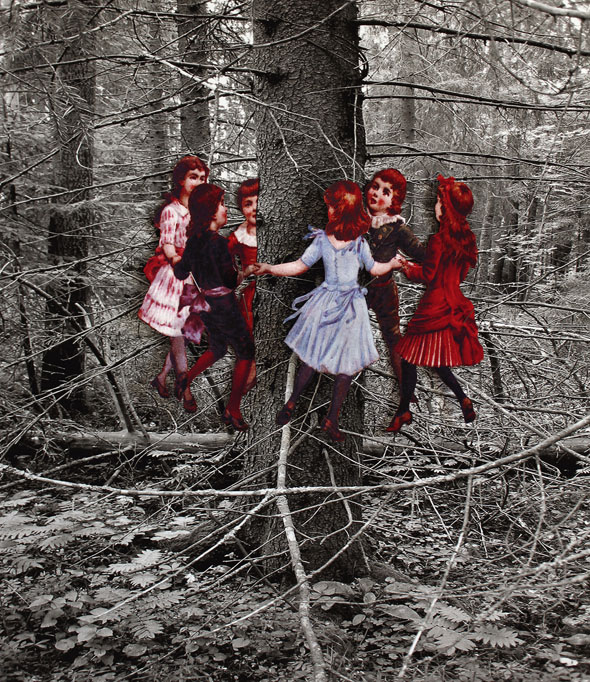
‘Ring dance’ by Ulla Jokisalo (pigment print and pins, 2009)
New literary prize
6 May 2011 | In the news
A new literary prize was founded in 2010 by an association bearing the name of Jarkko Laine (1947–2006) – poet, writer, playwright, translator, long-time editor of the literary journal Parnasso and chair of the Finnish Writers’s Union.
The Jarkko Laine Literary Prize will be awarded to a ‘challenging new literary work’ published during the previous two years. The jury, of nine members, will announce the winner on 19 May.
The shortlist for the first prize is made of Kristina Carlson’s novel Herra Darwinin puutarhuri (‘Mr Darwin’s gardener’, Otava, 2009), Juha Kulmala’s collection of poems, Emme ole dodo (‘We are not dodo’, Savukeidas, 2009) and Erik Wahlström’s novel Flugtämjaren (‘Fly tamer’, Finnish translation Kärpäsenkesyttäjä, Schildts, 2010).
The prize money, €10,000, comes jointly from the publishing houses Otava, Otavamedia and WSOY, the Haavikko Foundation, the City of Turku and the University of Turku.
Kvinnornas Helsingfors: en kulturhistorisk guide [Women’s Helsinki: a culture-historical guidebook]
6 May 2011 | Mini reviews, Reviews
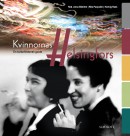 Kvinnornas Helsingfors: en kulturhistorisk guide
Kvinnornas Helsingfors: en kulturhistorisk guide
[Women’s Helsinki: a cultural-historical guidebook]
Red. [Ed. by] Anna Biström, Rita Paqvalén, Hedvig Rask
Helsingfors: Schildts, 2010. 251 p., ill.
ISBN 978-951-50-2007-9
Finnish-language edition: Naisten Helsinki: kulttuurihistoriallinen opas
ISBN 978-951-50-1994-3
€ 34, paperback
A group comprising fourteen women has addressed the question of what the map of Helsinki would look like seen through women’s history: what are the most significant places and monuments; what traces of women’s history could one read in the fabric of the city? This book portrays various eras in the city’s history from the 16th century onwards, along with profiles of female pioneers in fields from architecture to parliamentarians, from early political activists to present-day squatters. Helsinki has often been called ‘the city of women’ due to the large influx of women who came to work in the Finnish capital, particularly in the early 20th century – the increase in the number of office girls even boosted the publishing and film industries. In his Finnish letters written in the 1890s, Spanish author and diplomat Ángel Ganivet expressed his horror at the bicycling women of Helsinki. This book also includes pieces written by prominent contemporary women, from Finnish President Tarja Halonen to author Pirkko Saisio.
Translated by Ruth Urbom
Sodan kasvattamat [Brought up by war]
6 May 2011 | Mini reviews, Reviews
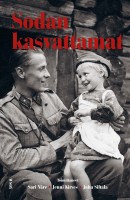 Sodan kasvattamat
Sodan kasvattamat
[Brought up by war]
Toimittaneet [Ed. by]: Sari Näre, Jenni Kirves and Juha Siltala
Helsinki: WSOY, 2010. 464 p., ill.
ISBN 978-951-0-36733-9
€ 34, hardback
This volume is a collection of personal historical accounts relating to child-rearing and youth during the Finnish Winter and Continuation Wars (1939–1944). In the war years, 60,000 children were orphaned and nearly 80,000 were evacuated abroad, mainly to Sweden; in relative terms, this was a greater proportion of the nation’s children than were similarly affected anywhere else in the world. Some 150,000 children lost their homes in bombing raids or in the Finnish evacuation from the region of Karelia. Finland’s agrarian society taught these children to be obedient and to get by without assistance from adults. The Finnish civil war of 1918 had its effects as well: people did not talk much about their emotions. In circumstances where disciplined sacrifice was emphasised, young people found solace in games, sport and working. Researcher Ville Kivimäki speculates that the widespread experience of an unprotected childhood may have led, at least in part, to Finland’s establishing a social welfare state after the Second World War, as a kind of compensation. The material draws on earlier research, archived personal accounts and memoirs as well as numerous new in-depth interviews.
Translated by Ruth Urbom
Johan Leche & Johan Grysselius
The birds and the bees
2 May 2011 | Non-fiction
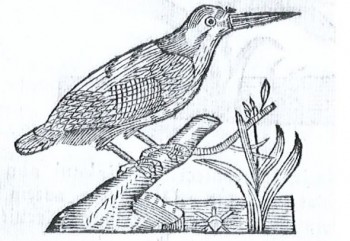
Halcyon or Ispida (kingfisher)? A picture of this mythical bird from a 17th-century thesis, published in Suomen lintutieteen synty

Halcyon or Ispida (kingfisher)? A picture of this mythical bird from a 17th-century thesis, published in Suomen lintutieteen synty
The famous Swedish scientist Carl von Linné claimed in his doctoral thesis in 1757 that swallows spend their winters underwater.
Two of Linné’s countrymen, working at Åbo Academy in Finland, proved him wrong seven years later by giving evidence of migration, but to no avail: the silly theory prevailed until the 19th century.
In these extracts doctors Leche and Grysselius eloquently present a ‘Well-Intended Reader’ with errors of humanity that become epidemic
Extracts from ‘An Academic Treatise on The Wintering and Migration of Swallows’ by Johan Leche & Johan Grysselius (1764), published in Finnish (translated from Latin by Sari Kivistö) in Suomen lintutieteen synty. Turun Akatemian aika (‘The birth of the Finnish ornithology. The era of the Åbo Akademi’, Faros, 2009), edited by Esa Lehikoinen, Risto Lemmetyinen, Timo Vuorisalo & Sari Kivistö
Preface
As we know, humanity is no less inclined to err in matters pertaining to nature than in matters of morals. With regards to errors concerning the natural world, even the most experienced scholars are not always immune. The common people, for their part, have not learned to avoid such pitfalls and are thus constantly bumping into them. This is no wonder, since they are not accustomed to using the help of natural science or mathematics, and are thus unable to perform appropriate tests, to correctly assess future eventualities, or to observe phenomena closely unless they concern something already familiar to them. More…
